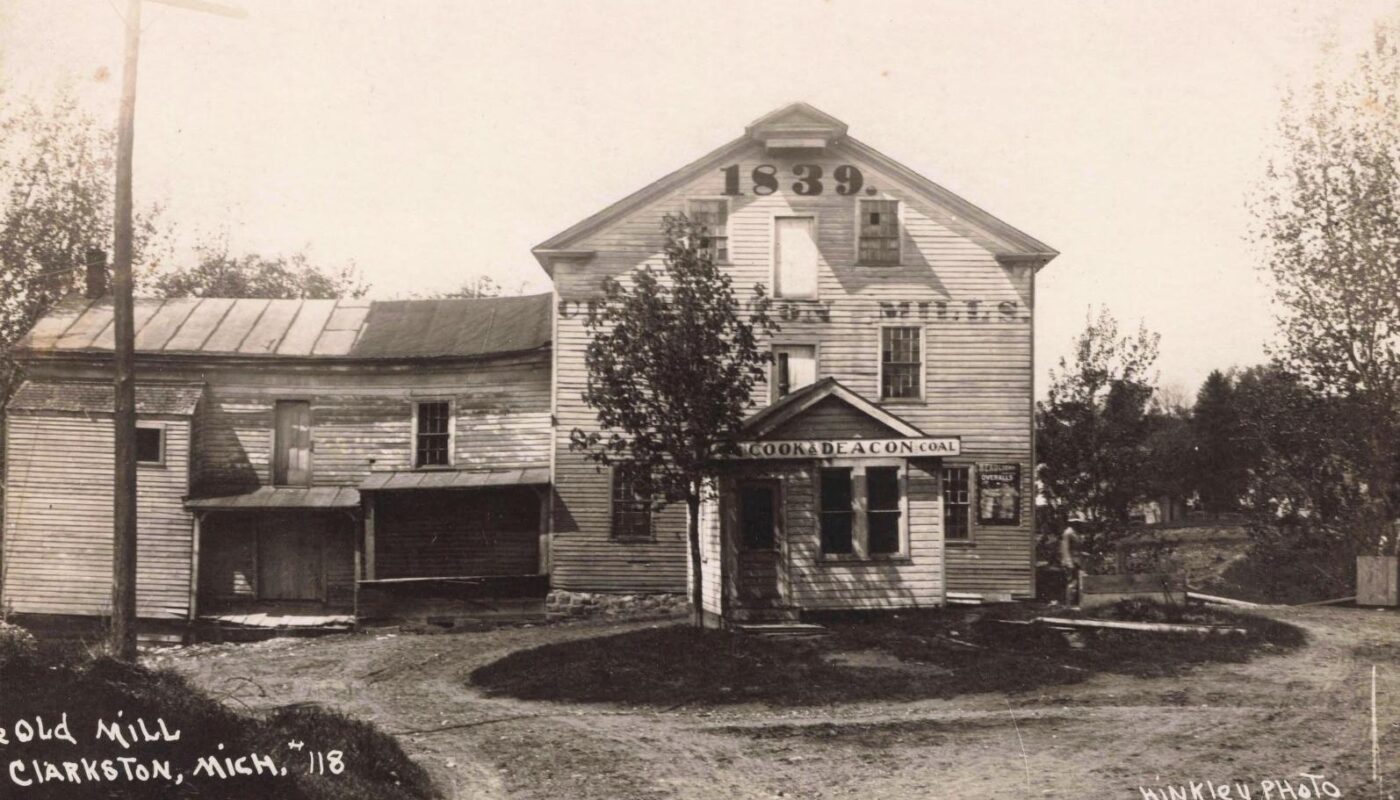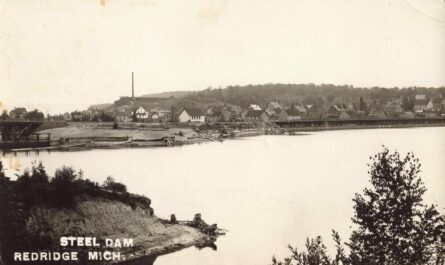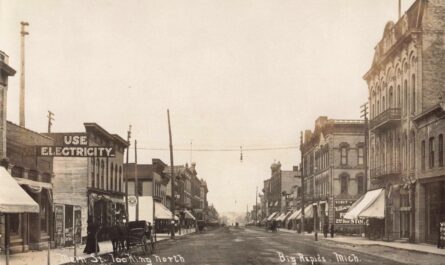Just 40 minutes northwest of Detroit, the city of the Village of Clarkston holds a unique place in Michigan’s story, particularly about Clarkston Michigan history. With roots tracing back to the early 1830s, this small community developed around lakes, mills, and trade routes, quickly becoming a retreat for vacationers and a tight-knit home for generations of families.
Early Beginnings and Founding Families
The rich Clarkston Michigan history is reflected in its architecture and the stories of its founding families. Clarkston’s story begins with Linus Jacox, a settler from New York who built the area’s first home in 1830. Soon after, brothers Jeremiah and Nelson Clark purchased large tracts of land, constructed mills, and opened one of the region’s first general stores. They officially platted the village in 1840 and by 1842, the settlement took on the name Clarkston in their honor.
The community’s early economy revolved around sawmills and gristmills powered by the Clinton River. Farmers and merchants depended on local mills, while the arrival of the railroad in 1851 positioned Clarkston as a rural hub between Pontiac and Flint.
Life on Historic Main Street
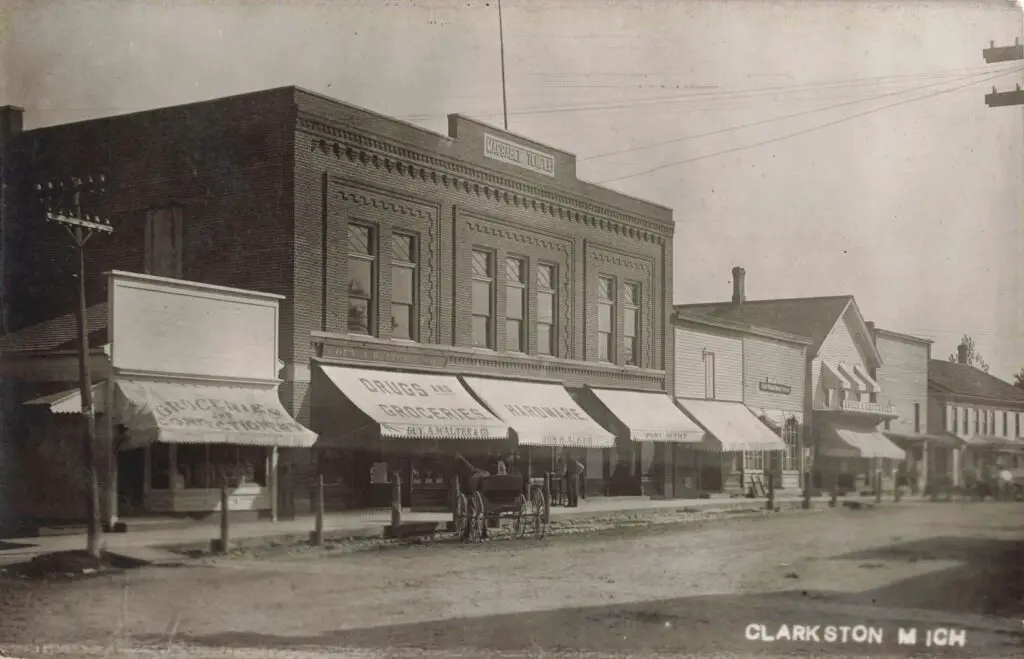
By the late 19th century, Clarkston’s Main Street served as the center of commerce. Brick storefronts lined the road, housing businesses like Guy A. Walter & Co. Hardware and Joseph Alger’s general store. The imposing Maccabee Temple became a cornerstone, hosting everything from public meetings to social gatherings.
Horse-drawn wagons kicked up dust on Main Street while children played nearby, and storefront awnings shaded windows full of dry goods, medicine, and tools. It was a picture of small-town life in the early 1900s—busy, practical, and community-focused.
Hospitality and Tourism Boom
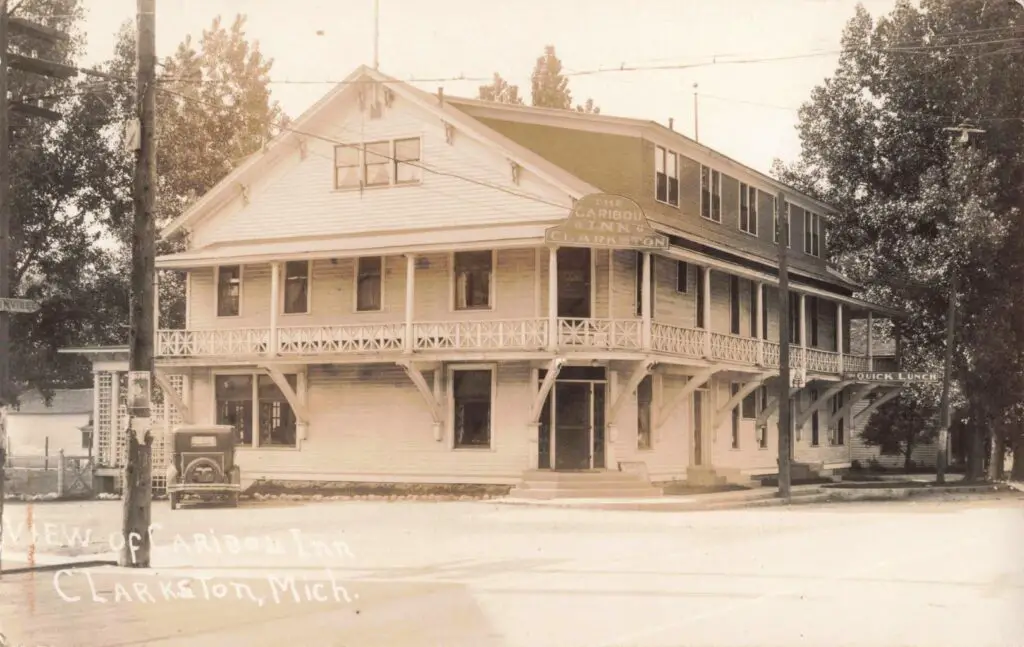
As Detroit grew, so did interest in Michigan’s “up north” retreats. Clarkston quickly became a popular destination for summer visitors escaping the city’s heat. Hotels and inns popped up throughout the village and the surrounding lakefronts.
The Deer Lake Inn offered fine dining in a serene setting. The Caribou Inn catered to overnight guests and short-term visitors with porch views and easy access to Clarkston’s bustling downtown. Green Acres Inn, tucked on a shady hill, welcomed vacationers with rocking chairs and wraparound porches.
Arriving tourists often came by train, disembarking at the Clarkston Depot, which was a key link to the region’s growing travel network. The Carabou Inn served Clarkston until 1958, when it was destroyed by fire.
Educational Heritage
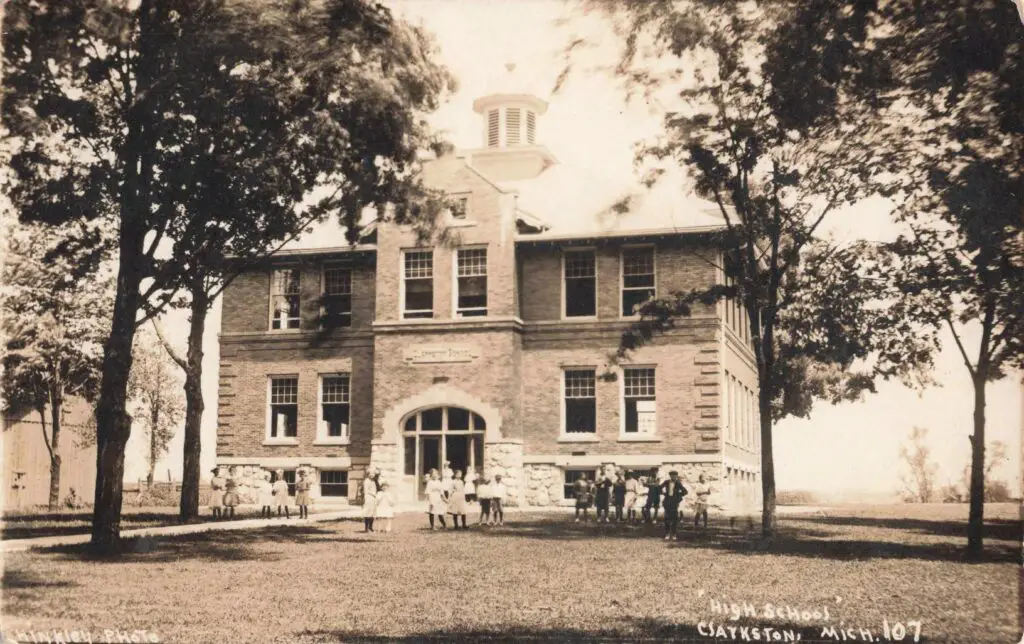
Clarkston’s commitment to public education dates back to its earliest years. One of the town’s most notable buildings was its early high school, a two-story brick structure surrounded by tall trees and open lawns. Early photographs show students in white shirts and knickers lined up on the grass, offering a snapshot of a simpler, slower pace of life.
Over the decades, Clarkston Community Schools evolved into one of Oakland County’s most respected districts—an extension of the community’s long-standing emphasis on education.
Industry and Adaptation: The Old Mill
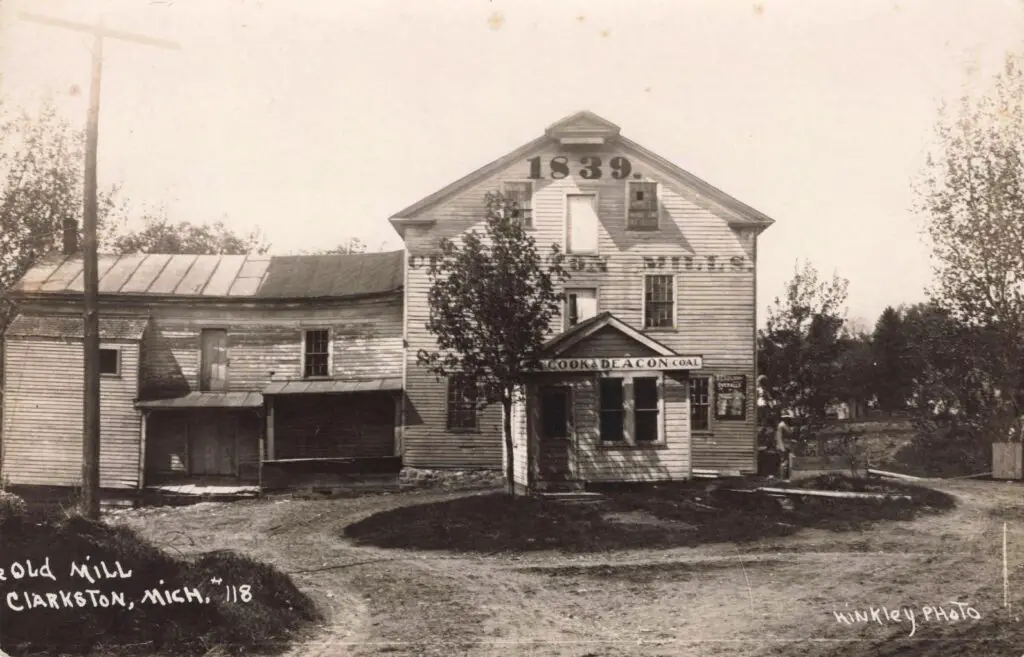
Established in 1839, the Old Mill became one of Clarkston’s most iconic industrial buildings. Originally used to grind grain, it later transitioned into coal storage and fuel distribution under the ownership of Cook & Deacon. The building reflected the town’s ability to adapt as new technologies and needs emerged.
Lumber yards, crate factories, and local shops supported the town’s working families while giving rise to a culture of skilled labor and small business ownership.
Clarkston Today: Balancing Past and Present
Today, Clarkston is officially Michigan’s smallest city by land area—just under half a square mile—but its influence and charm are outsized. The entire downtown is a registered historic district, with more than 100 preserved buildings showcasing Queen Anne, Gothic Revival, and Colonial Revival architecture.
Despite suburban growth around it, Clarkston has managed to retain its distinct identity. Annual events like Art in the Village and the local farmers market draw residents and visitors into its walkable downtown. Restaurants like the Union Woodshop and Clarkston Union Bar & Kitchen have turned the town into a destination for food lovers.
Though the horse-drawn wagons are long gone, the legacy of the Clark brothers and the echoes of Clarkston’s early Main Street remain clear. In a state known for reinvention, Clarkston quietly proves that holding onto your roots can be a strength.
